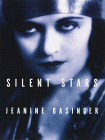![]()
Books Of Interest
Many books have been written related to Marion Davies. You will find some here along with a review and link for a quick purchase at Amazon.com.
Click on the book's picture to purchase or see the Amazon.com reviews.
The Times We Had: Life With William Randolf Hearst
Marion was the unofficial empress of Hollywood and she spent a lifetime as the mistress of one of America's richest men. Gathered from tapes recorded a decade before Marion Davies's death, read, in her own words, the story of a fantastic and glittering life, as never told before.

Talkies : American Cinema's Transition to Sound, 1926-1931
The Talkies offers readers a rare look at the time when sound was a vexing challenge for filmmakers and the source of
contentious debate for audiences and critics. Donald Crafton presents a panoramic view of the talkies reception as well as
in-depth looks at sound design in selected films, filmmaking practices, censorship, issues of race, and the furious debate
over cinema aesthetics that erupted once the movies began to speak.

Silent Stars
Through concise biographies, explorations of filmographies, and captivating still shots, Jeanine Basinger offers remarkable
insight into both the on- and offscreen lives of the cinema's first stars. Basinger shows an incredible knack for getting past
the average movie fan's barriers to appreciating silent film actors: the larger-than-life acting style, frequently goofy plots,
and general difficulty in finding films of all but a few luminaries like Charlie Chaplin and Buster Keaton. Deft plot synopses,
careful explanations of the skills needed for silent acting, and a genuine affection for the movies she's describing allow
Basinger to give the reader a real sense of why these early actors were so beloved--and why they are so deserving of
tribute. Mary Pickford, long unfairly maligned for playing saccharine little girls, is revealed to be a shrewd and highly
professional performer, involved in every aspect of film production, careful to expand beyond her audience's expectations of
her, and possessing deft comic flair. The lives and careers of two silent cowboys, the soulfully stoic William S. Hart and the
flamboyant Tom Mix, are also compared and contrasted--oddly enough, to the detriment of neither. The book also covers
the great sex symbols like Pola Negri and Rudolph Valentino and takes a welcome dive into the comedies of Mack Sennett.
Equally engaging as browsing material or a cover-to-cover read, Silent Stars gives voice to both the sung and unsung
pioneers of film. --Ali Davis

Wise@ra@ker
Hollywood has always been somewhat of a haven for homosexuals, but only if they remained closeted. Even today, it is the
rare actor--and almost never a star--who dares to step out of the closet. But there are always exceptions. William J.
Mann's wonderful biography Wisecracker details the amazing life and career of William Haines, one of the industry's most
popular stars in the 1920s and 1930s, who never compromised his personal integrity to promote his career. Haines, who
appeared in hits such as Tell It to the Marines and Way Out West, lived as an openly gay man with his lover Jimmie Shields
and was accepted by straight and closeted gay Hollywood (as well as the press) until he retired from film and became an
internationally successful decorator. Mann pieces together Haines's life through interviews, historical research in studio
archives and fan magazines, and detailed evaluation of his film work. Beautifully written and surprisingly moving at times,
Wisecracker reveals not only a hidden chapter in Hollywood and gay history, but also illustrates how personal bravery can
make a difference. --This text refers to an out of print or unavailable edition of this title.

The Chief
The epic scope of historian David Nasaw's biography matches the titanic personality and achievements of William Randolph
Hearst (1862-1951), who built "the nation's first media conglomerate" from a single San Francisco newspaper. Based on
previously unavailable sources, including Hearst's personal papers, Nasaw's long but absorbing narrative gives a full-bodied
account of the often contradictory mogul: "a huge man with a tiny voice; a shy man who was most comfortable in crowds
... an autocratic boss who could not fire people; a devoted husband who lived with his mistress." Wife Millicent Hearst and
actress-inamorata Marion Davies also emerge with more complexity than in previous portraits like Orson Welles's Citizen
Kane, whose factual inaccuracies Nasaw dissects. The author tempers the usual simplistic account of Hearst's political
evolution from fire-breathing leftist to red-baiting conservative, calling him "a classic liberal" who believed in less-is-more
government and deplored fascism as much as communism. Fresh insights and elegantly turned phrases abound in Nasaw's
depiction of Hearst's activities as newspaper publisher, movie producer, and politician, but what's even more intriguing is
the poignant personal drama of a man born "in the city of great expectations on the edge of the continent" who was buried
89 years later in San Francisco, "the place he used to know." --Wendy Smith

![]()
